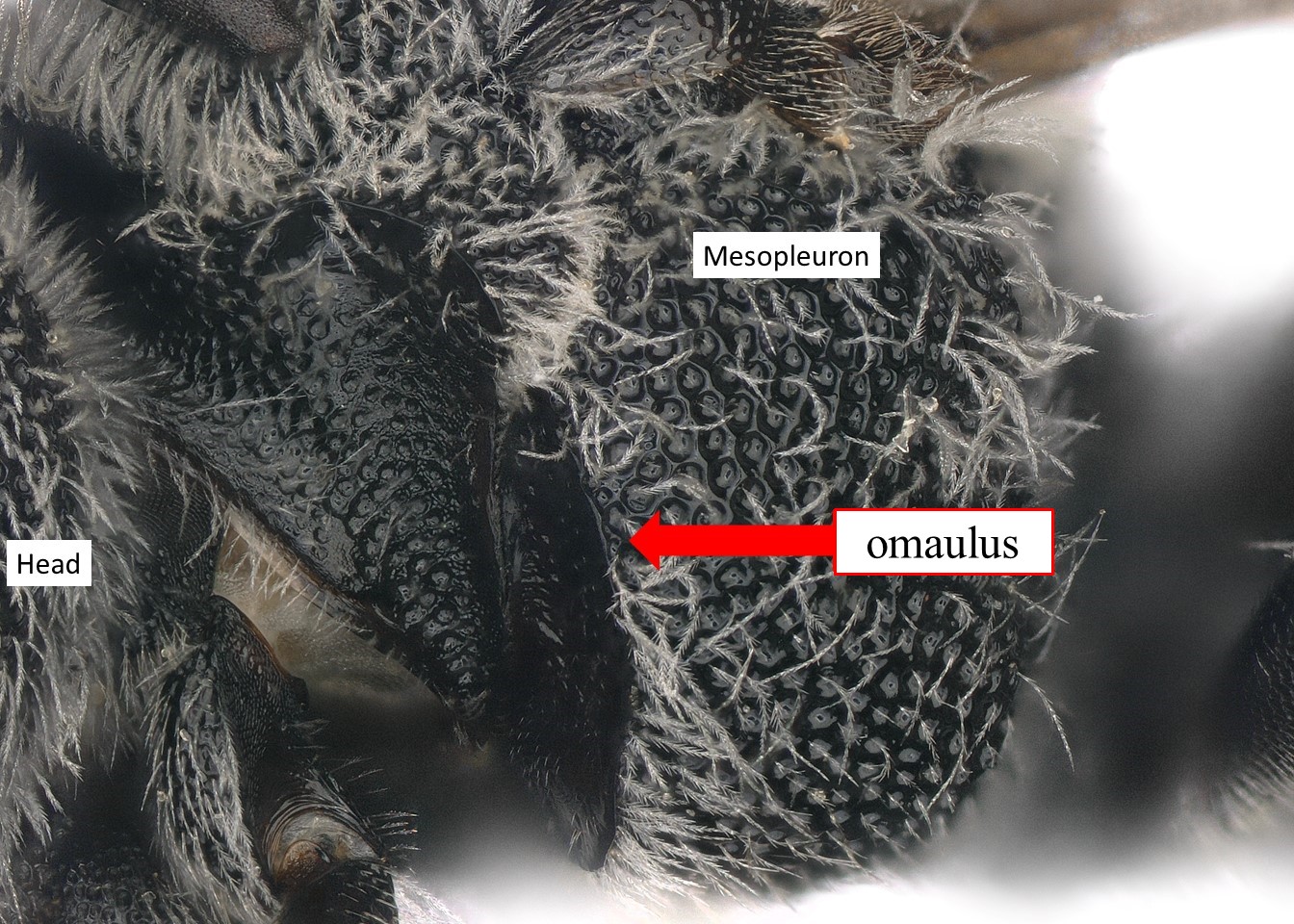Family: Megachilidae
Subfamily: Megachilinae
Tribe: Anthidiini
Genus: Anthidium Fabricius, 1804
Subgenus: Severanthidium Pasteels, 1969
Common name: none
Anthidium (Severanthidium) are robust, black bees with yellow markings and a wide, flat head (Michener 2007Michener 2007:
Michener, C.D. 2007. The Bees of the World (2nd ed.). Johns Hopkins University Press, Baltimore and London, 953 pp.). The yellow markings can be restricted to the head and thorax. The abdomen varies in color from black, to yellow-brown, to red, and the abdominal bandsbands:
usually referring to bands of hair or bands of color that traverse across an abdominal segment
are broken and lack an emarginationemargination:
a notched or cut out place in an edge or margin, can be dramatic or simply a subtle inward departure from the general curve or line of the margin or structure being described
(Michener 2007Michener 2007:
Michener, C.D. 2007. The Bees of the World (2nd ed.). Johns Hopkins University Press, Baltimore and London, 953 pp.). They range in body length from 7–13 mm (Michener 2007Michener 2007:
Michener, C.D. 2007. The Bees of the World (2nd ed.). Johns Hopkins University Press, Baltimore and London, 953 pp.).
(modified from Michener 2007Michener 2007:
Michener, C.D. 2007. The Bees of the World (2nd ed.). Johns Hopkins University Press, Baltimore and London, 953 pp.)
 carinatecarinate:
carinatecarinate: to T3T3:
to T3T3: .
. is medially emarginated and forms two rounded lobes.
is medially emarginated and forms two rounded lobes.Anthidium (Severanthidium) may be confused with bees in the genus Pachyanthidium due to similar body form and coloration (Michener 2007Michener 2007:
Michener, C.D. 2007. The Bees of the World (2nd ed.). Johns Hopkins University Press, Baltimore and London, 953 pp.). Male A. (Severanthidium) may also be confused with bees in the subgenus A. (Proanthidium) due to the medially emarginated T7T7:
the segments on the top side of the abdomen, often abbreviated when referring to a specific segment to T1, T2, T3, T4, T5, T6, or T7 that forms two rounded lobes. However, A. (Severanthidium) can be differentiated from Pachyanthidium and A. (Proanthidium) due to the distinguishing characteristics listed above (Michener 2007Michener 2007:
that forms two rounded lobes. However, A. (Severanthidium) can be differentiated from Pachyanthidium and A. (Proanthidium) due to the distinguishing characteristics listed above (Michener 2007Michener 2007:
Michener, C.D. 2007. The Bees of the World (2nd ed.). Johns Hopkins University Press, Baltimore and London, 953 pp.).
Floral associations are unknown.
Nesting behavior is unknown.
Anthidium (Severanthidium) consists of ten species (Michener 2007Michener 2007:
Michener, C.D. 2007. The Bees of the World (2nd ed.). Johns Hopkins University Press, Baltimore and London, 953 pp.); none are known to occur in the U.S. or Canada.
There are no known invasives.
Anthidium (Severanthidium) occur in Oman and throughout sub-Saharan Africa, from Cape Province, South Africa to Senegal and Sudan (Michener 2007Michener 2007:
Michener, C.D. 2007. The Bees of the World (2nd ed.). Johns Hopkins University Press, Baltimore and London, 953 pp.).

Distribution map generated by Discover Life -- click on map for details, credits, and terms of use.
Michener, C.D. 2007. The Bees of the World (2nd ed.). Johns Hopkins University Press, Baltimore and London, 953 pp.